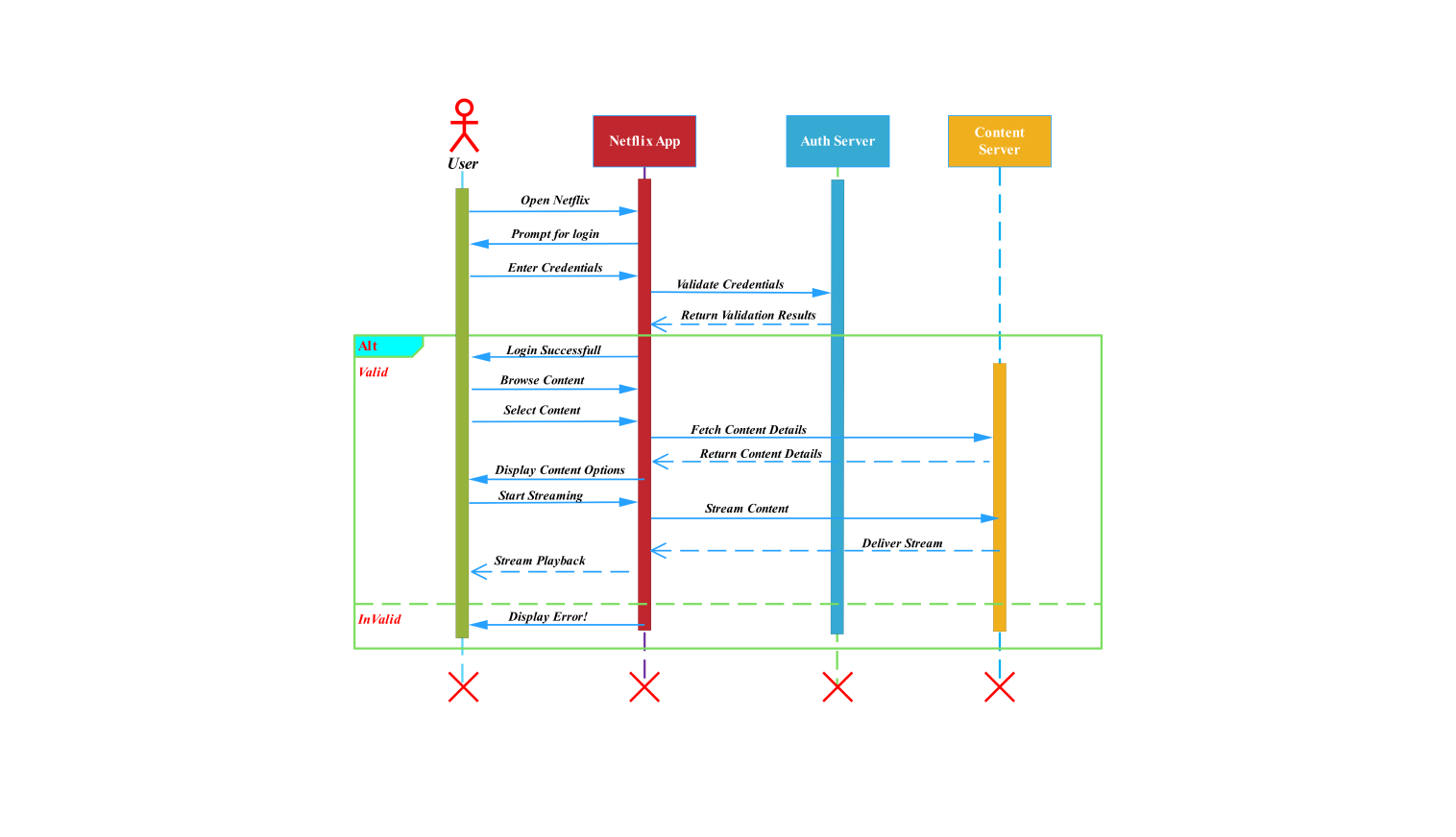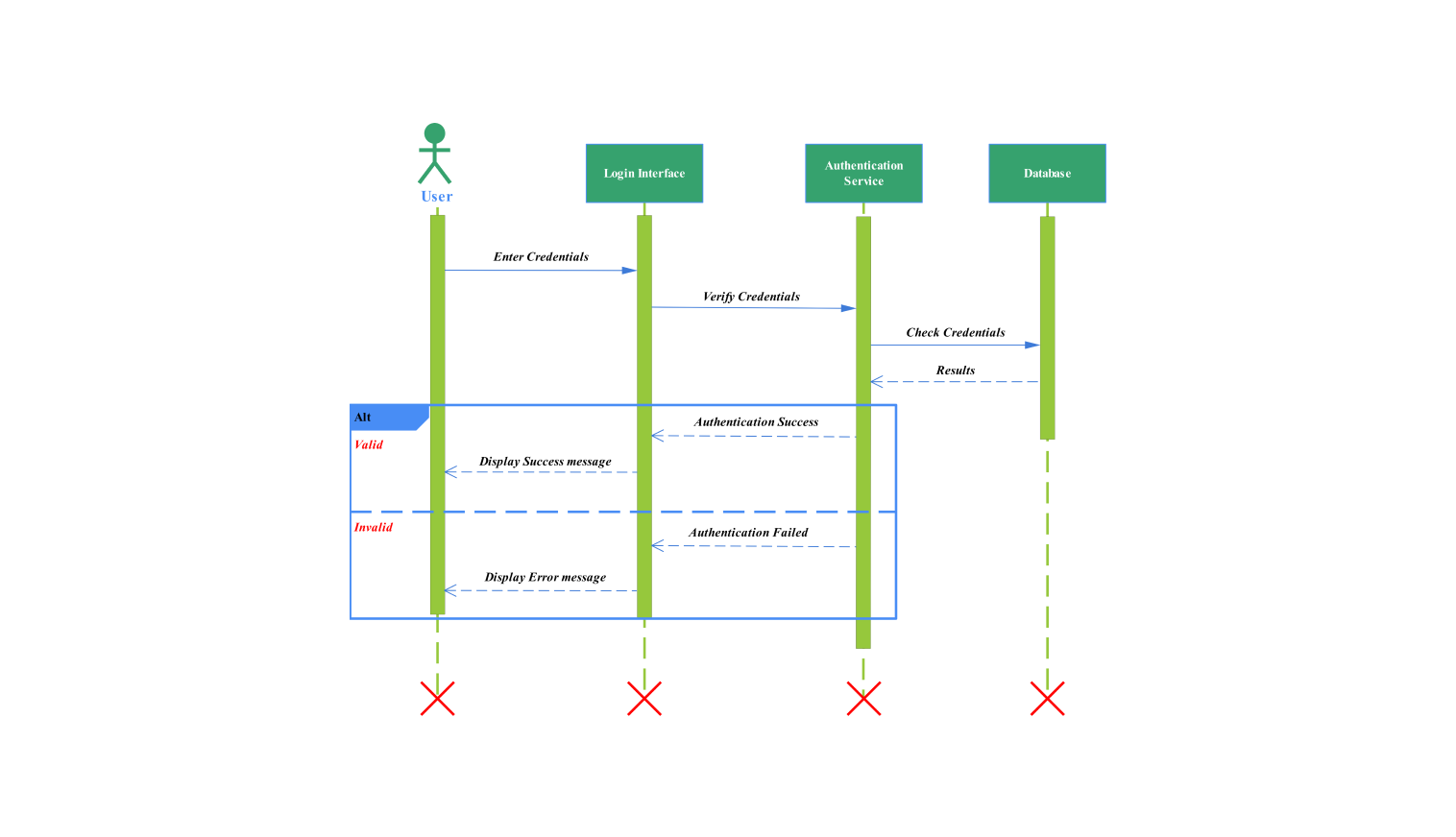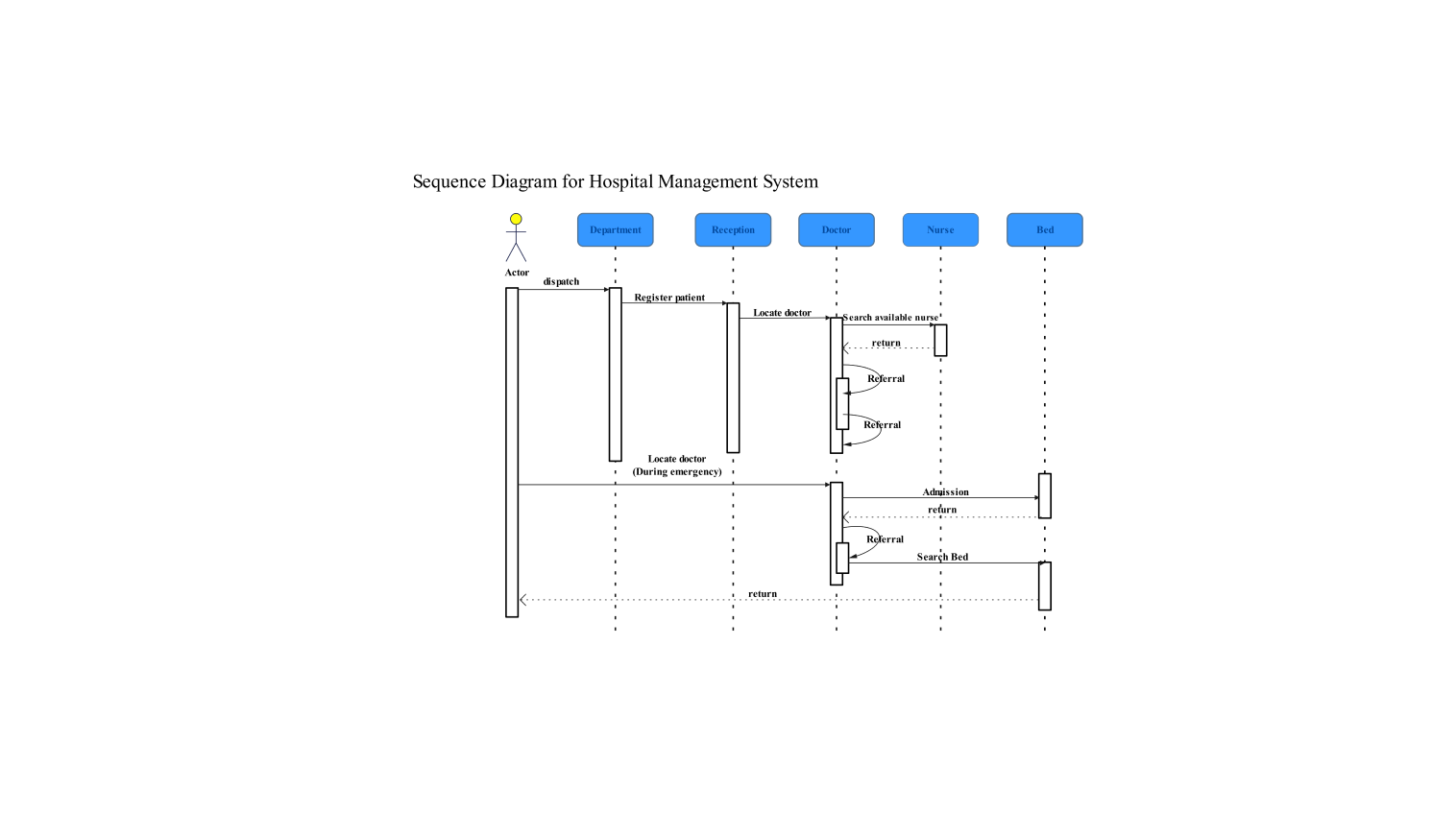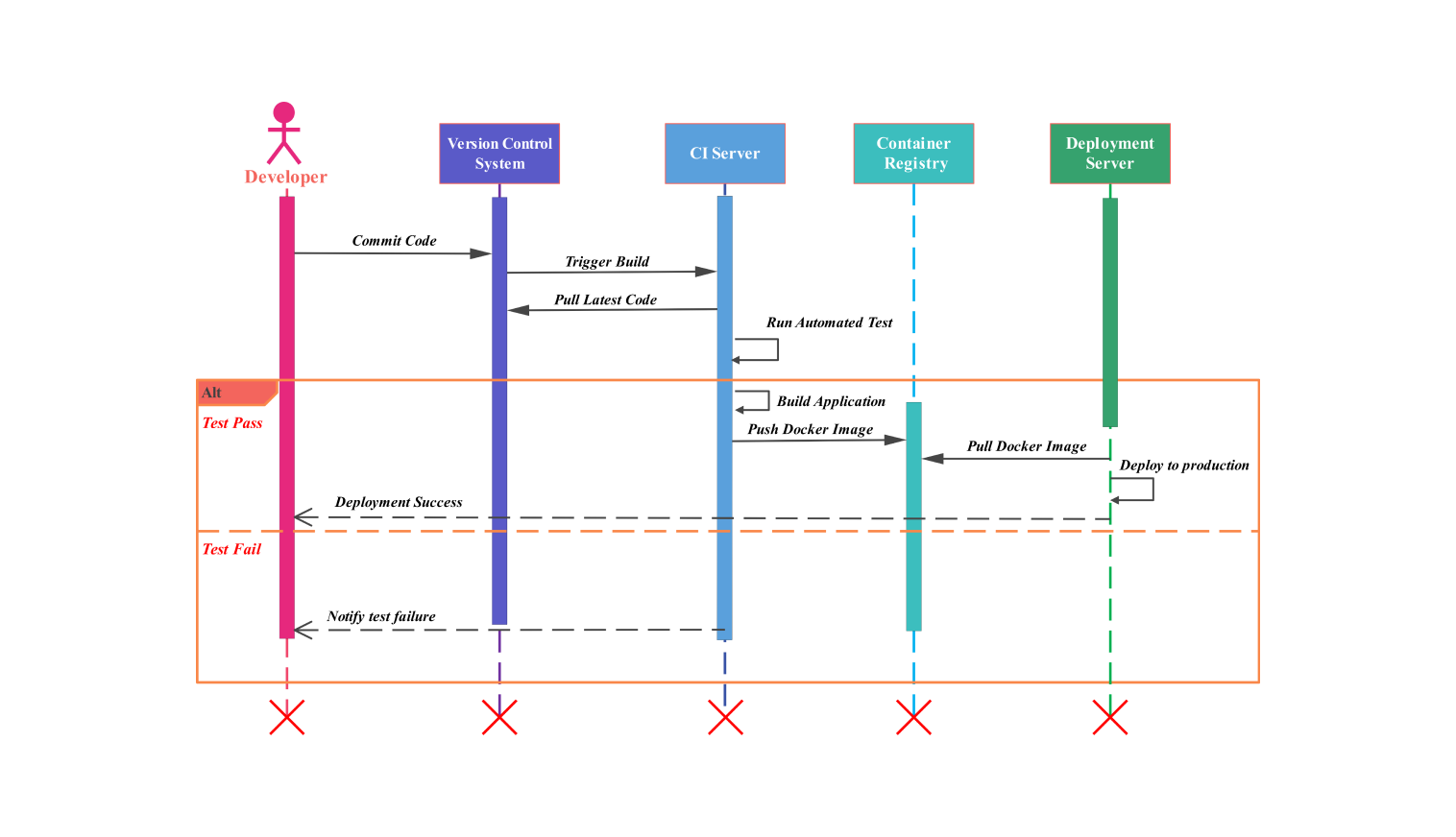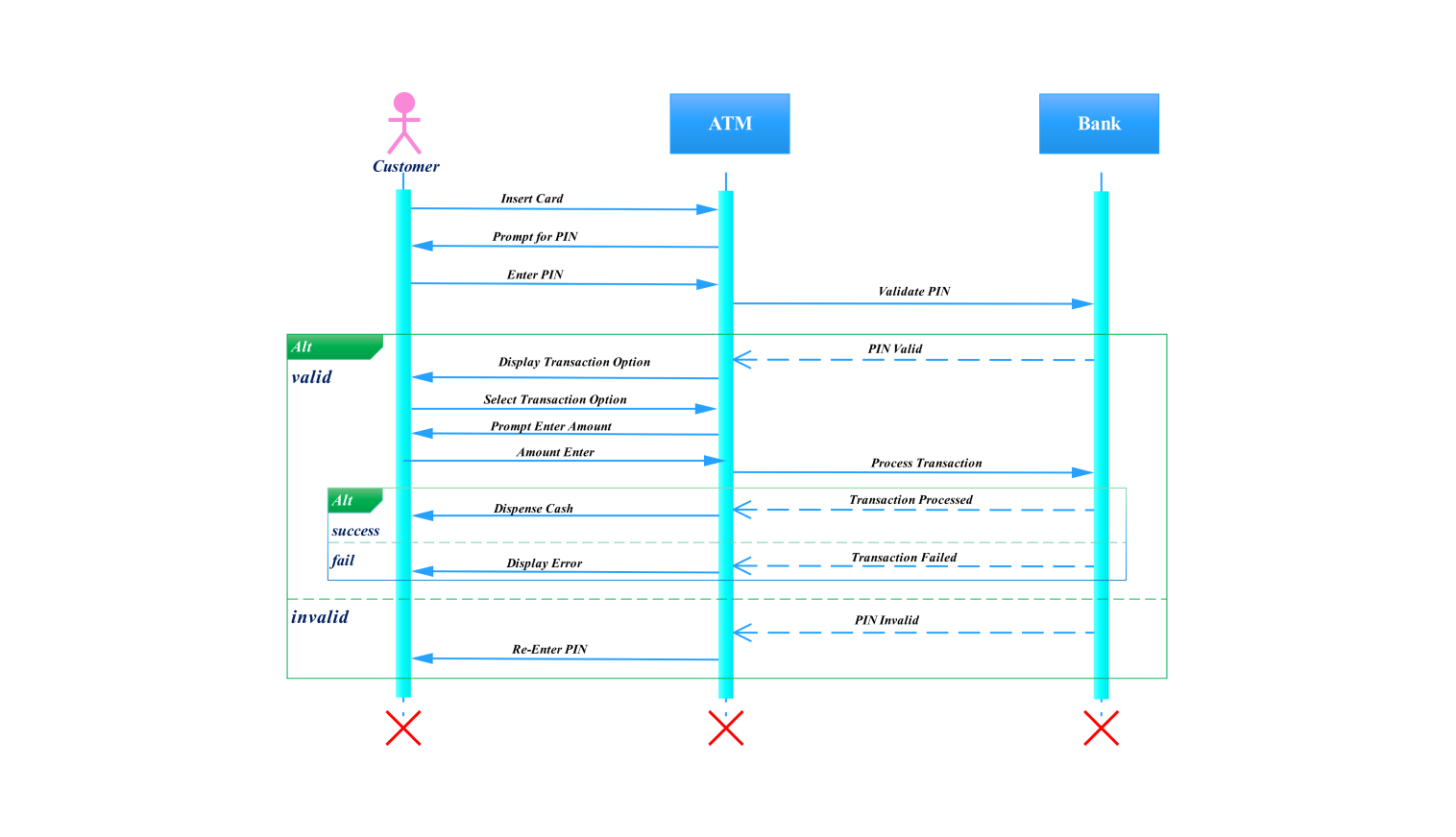- All templates
- Sequence diagram templates
- Sequence diagram insurance claim process
About this sequence diagram for the insurance claim process
This UML sequence diagram for the insurance claim process illustrates the process involved in insurance claims. It starts with the claimant. It ends with either a payment or a rejection, based on the validation results.
The sequence starts with the claimant filing a claim request which is attended to by a claim processor. The claim processor then begins the most crucial stage: validating the claim details. Validation is done to ensure all claim requirements are met before proceeding with the claim.
Afterward, if the claim details are certified by the claim processor, the next stage begins. The claim processor will forward the validated claim to the insurance system. The insurance system has complex internal processes. It must check the documents and evaluate the claim against its internal approval criteria. If the system thinks the claim is worth processing, it returns a success message. It says, "claim processing success." This lets them proceed to the next payment stage.
Next, the claim processor forwards a request to the payment gateway. The payment gateway controls transactions. It ensures the correct amount is released if a payment is successful. The payment gateway will also message the claim processor. It will inform the claimant that the claim is approved and the funds are released. This message approves the claimant's request. It also informs the claimant that their money is being processed.
If the payment is declined at the gateway, it alerts the claim processor of the failure. The claim processor will then inform the claimant and state why the payment was not made. This step shows the current situation. It lets the claimant reconsider. They can either face the payment problem again or find another way to access their money.
An alternative scenario occurs if the claim details are invalid. This can happen after the claim processor's initial check. In this case, the claim processor does not move further to process or make payment requests. Instead, it sends the claimant a denial notice. It denied the claim due to inaccuracies. This is crucial for dealing with the claimant. It will explain why the system rejected their claim.
In short, the UML sequence diagram for the insurance claim process describes each component of filing an insurance claim. It clearly shows the processes: a successful approval and payment, or a disallowed claim.
Related templates
Get started with EdrawMax today
Create 210 types of diagrams online for free.
Draw a diagram free Draw a diagram free Draw a diagram free Draw a diagram free Draw a diagram free
